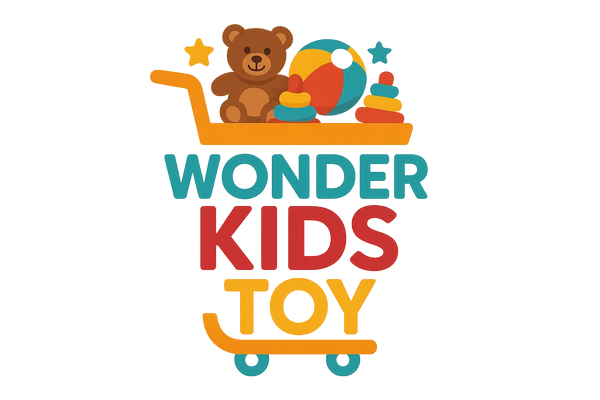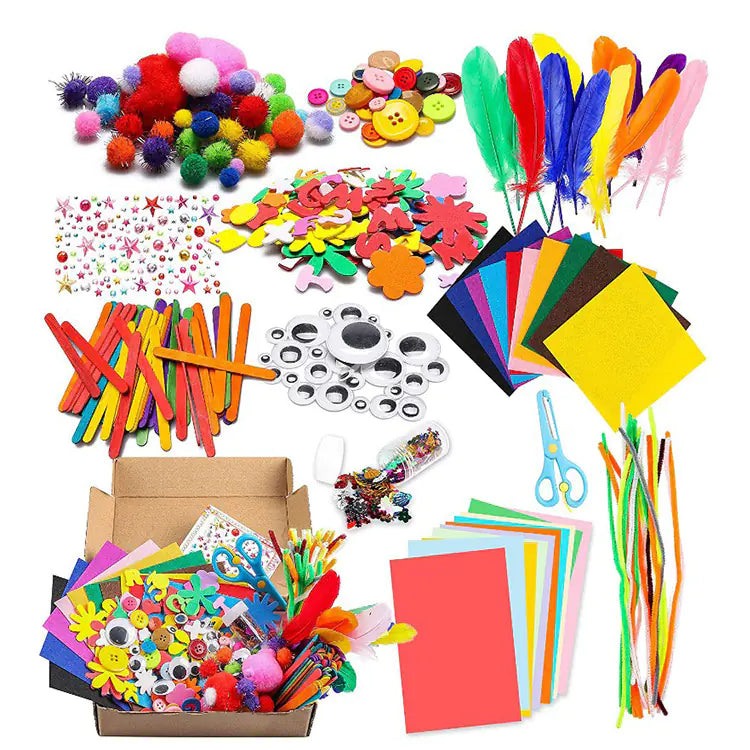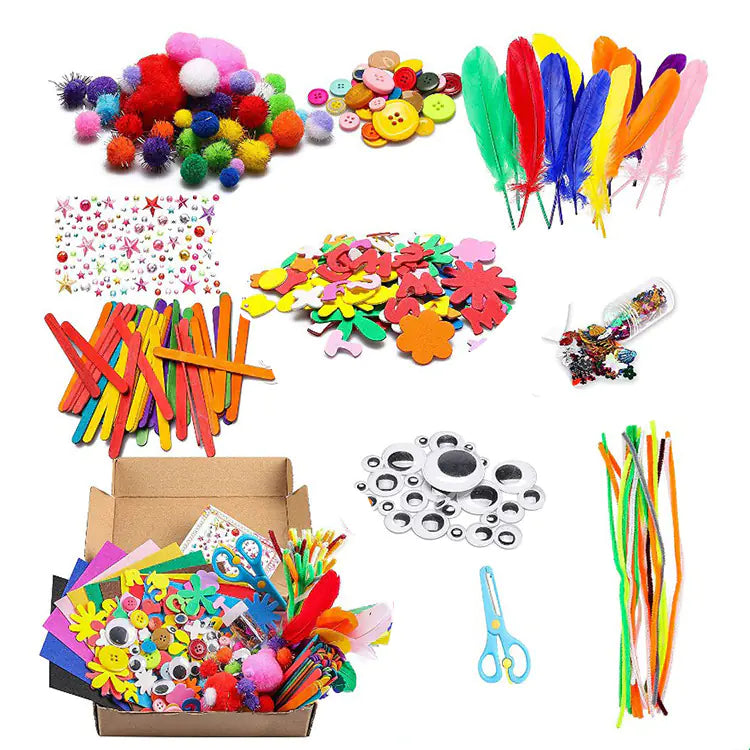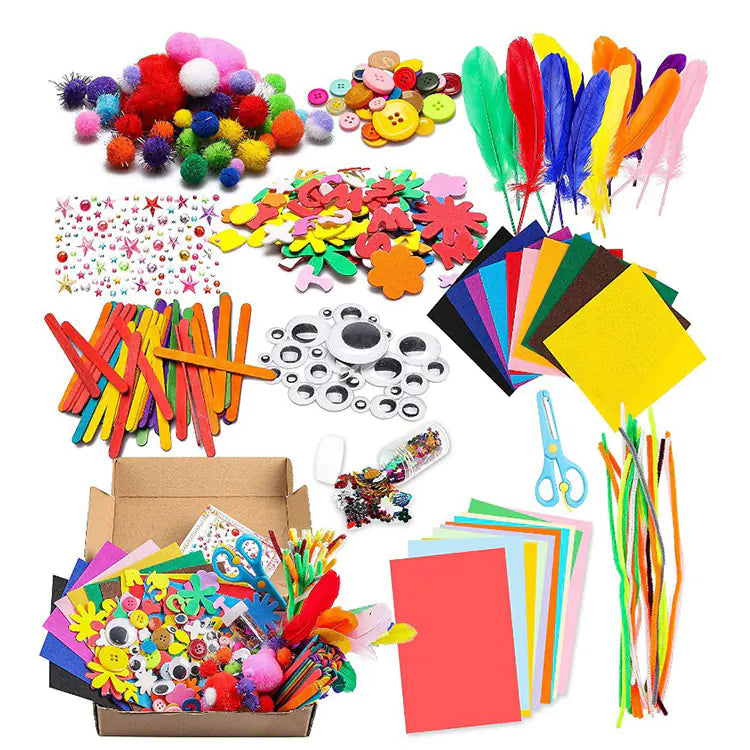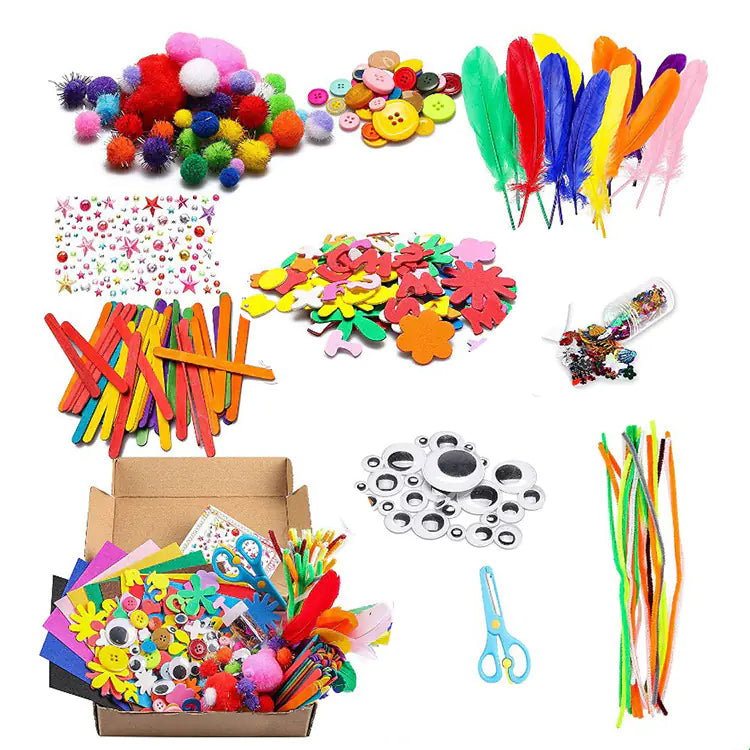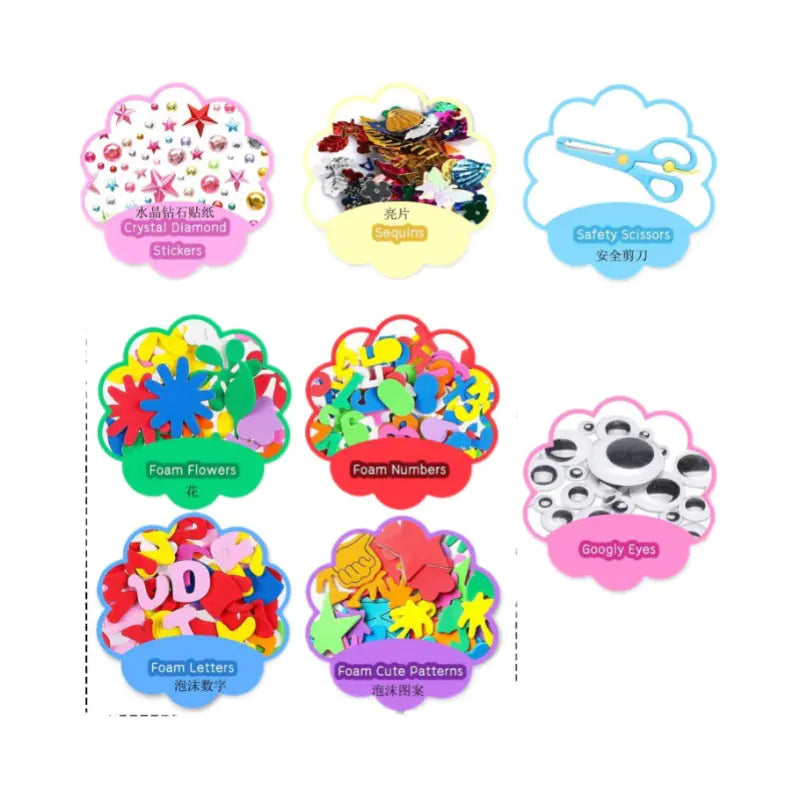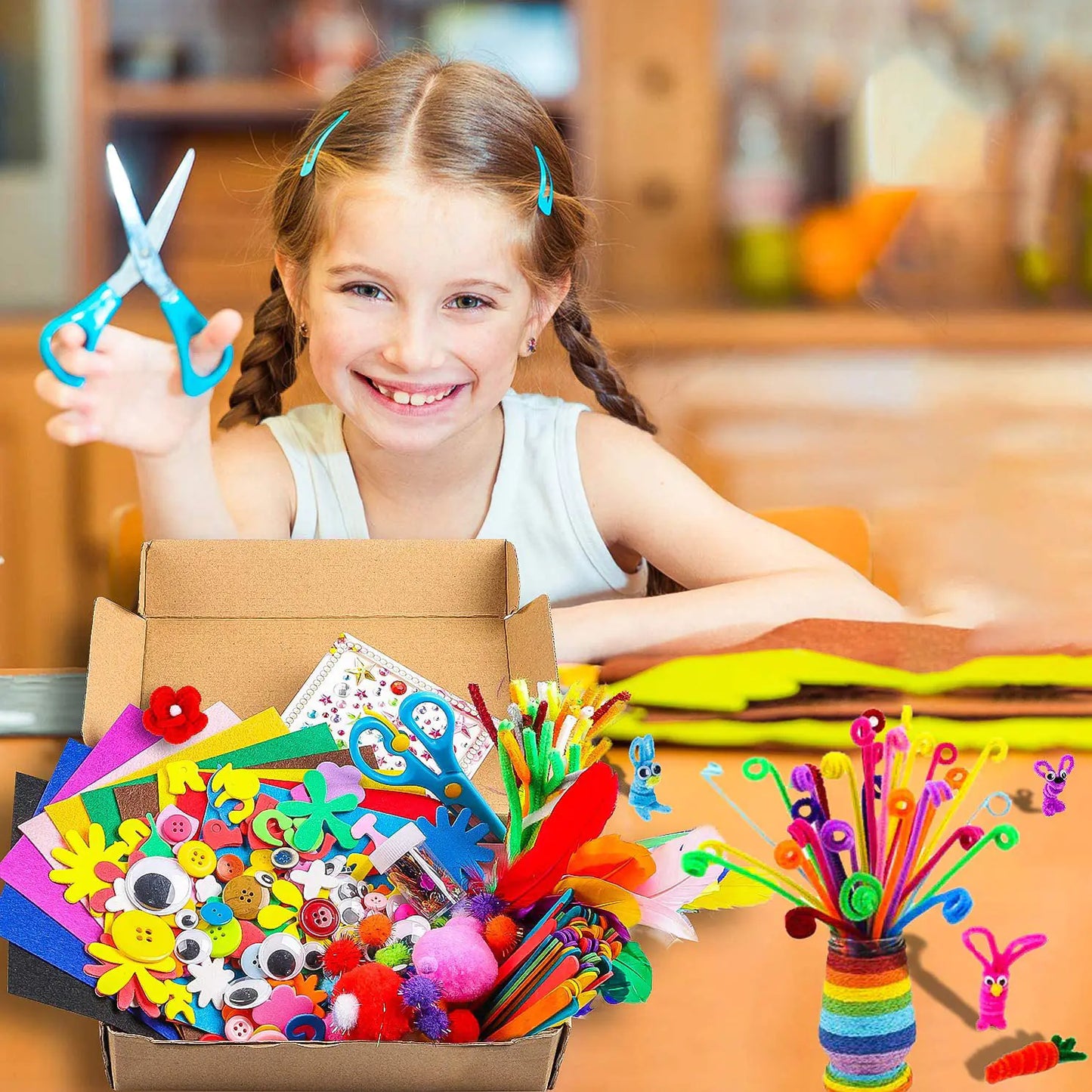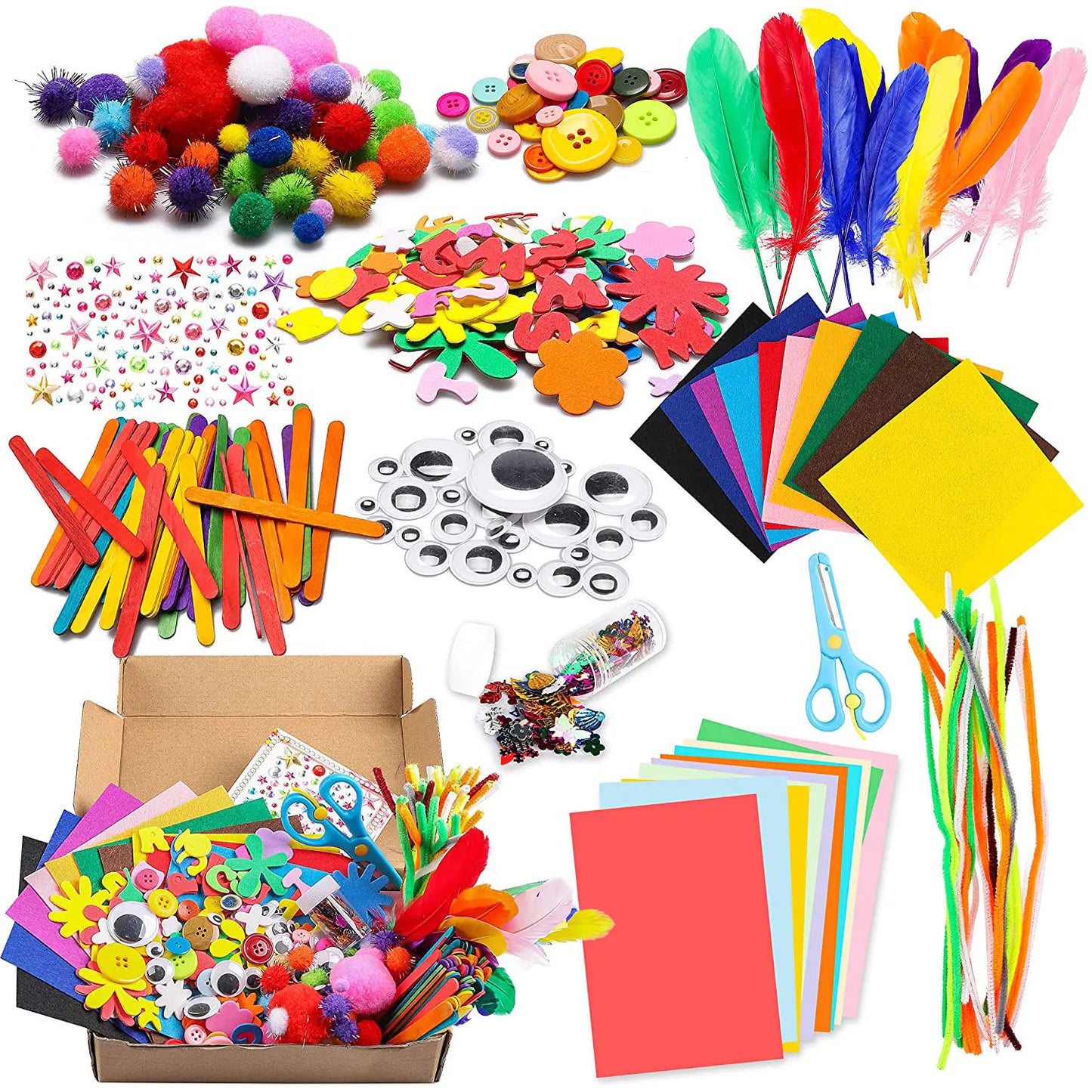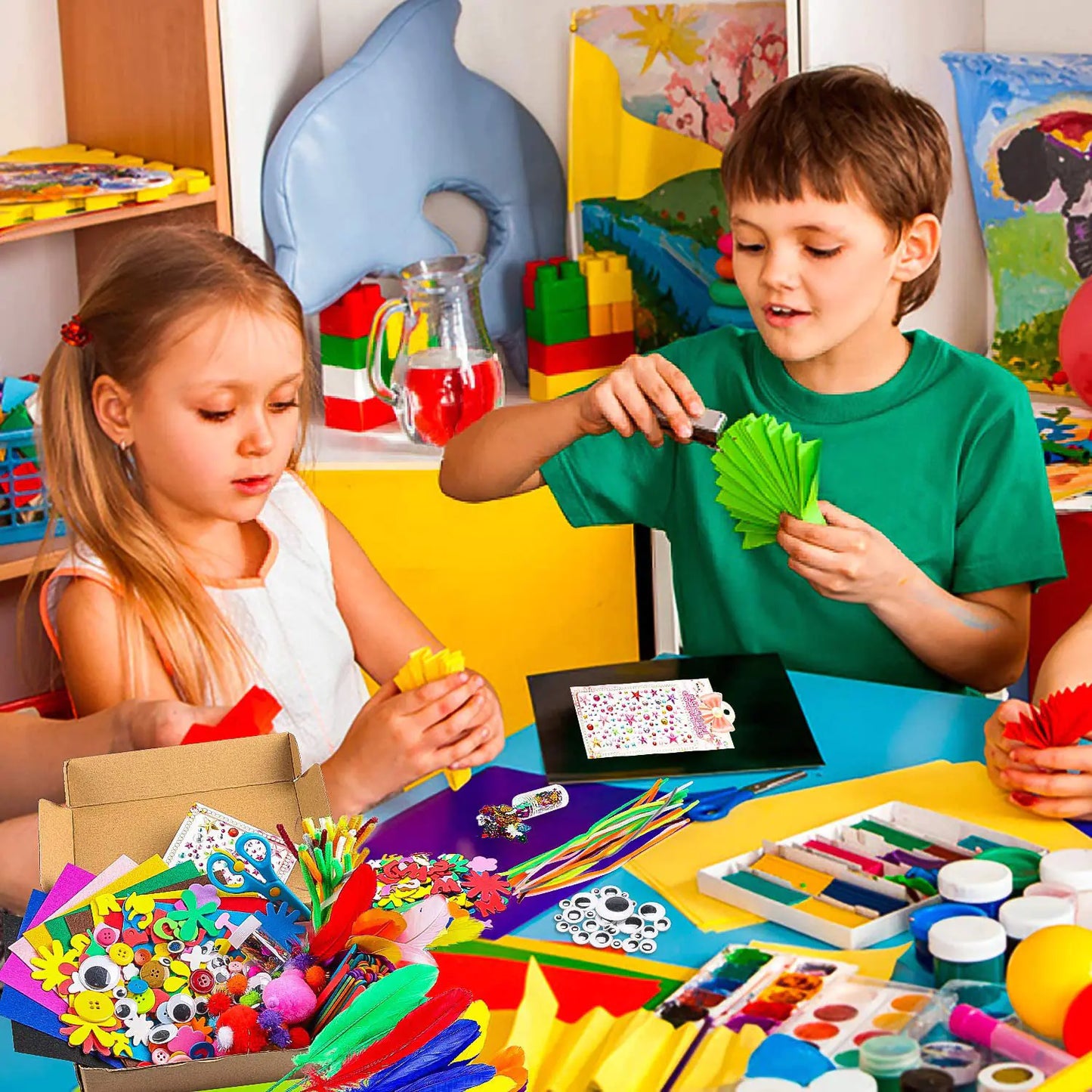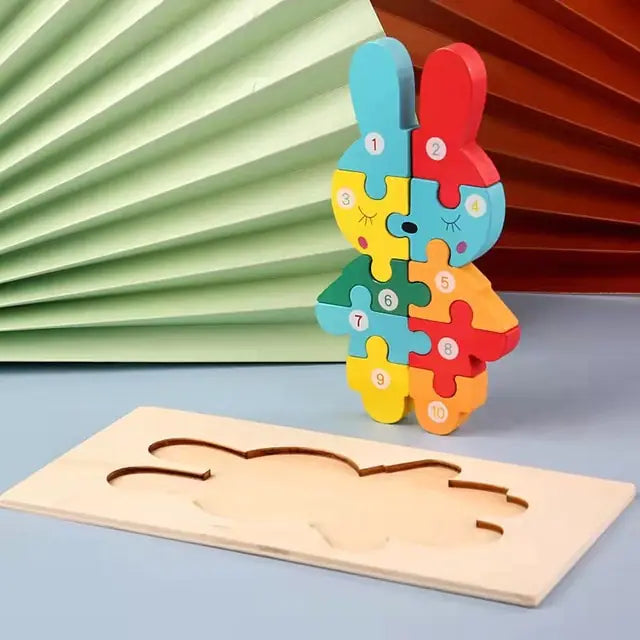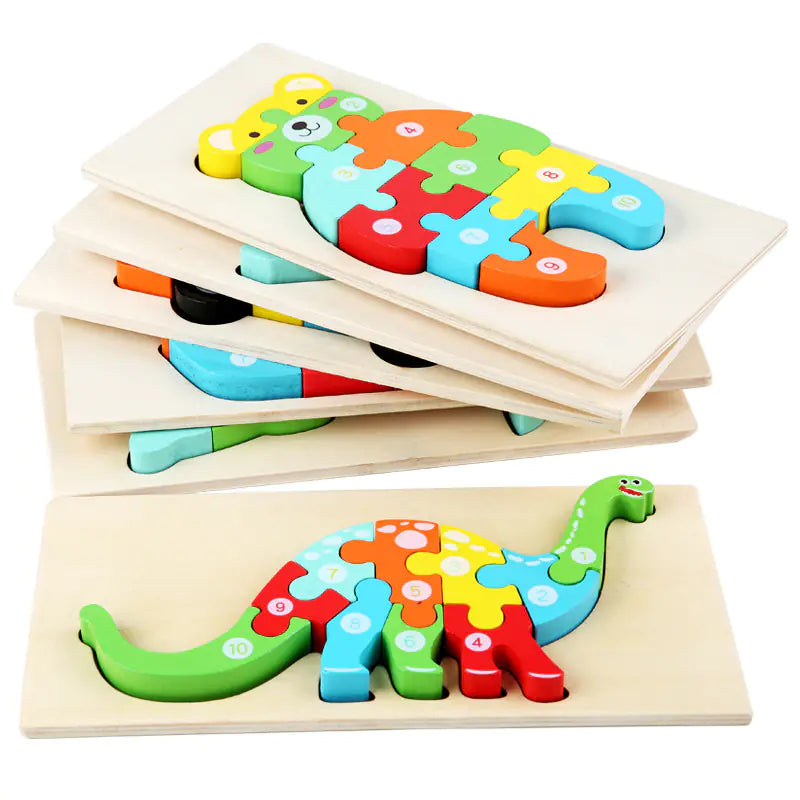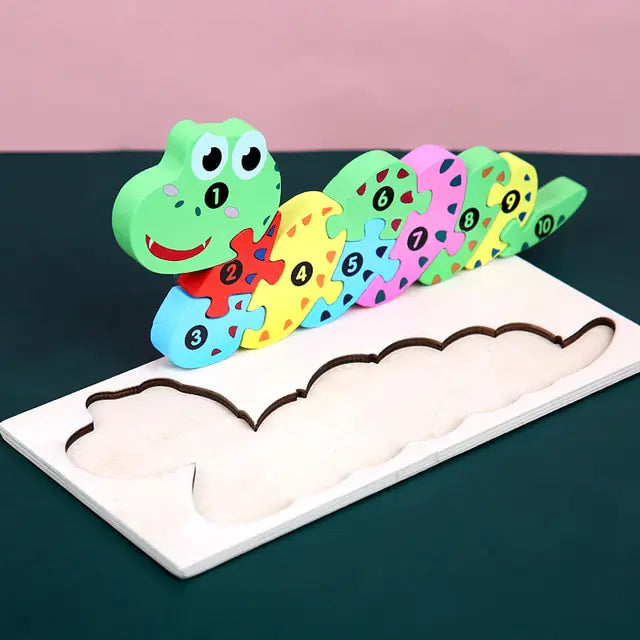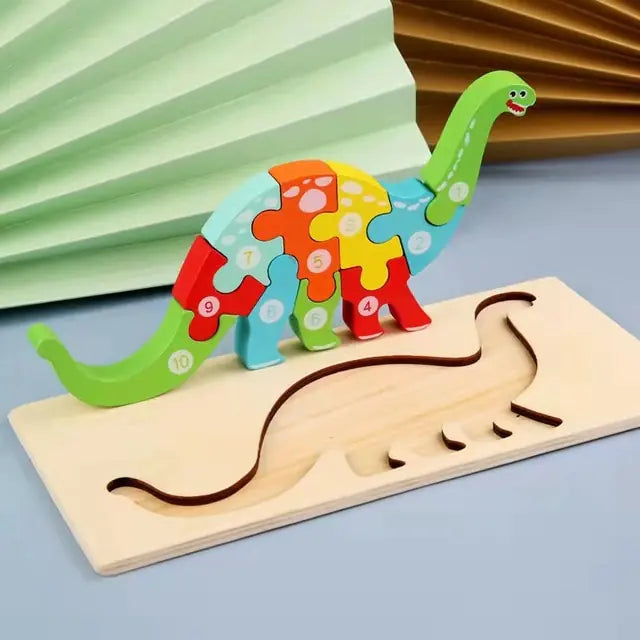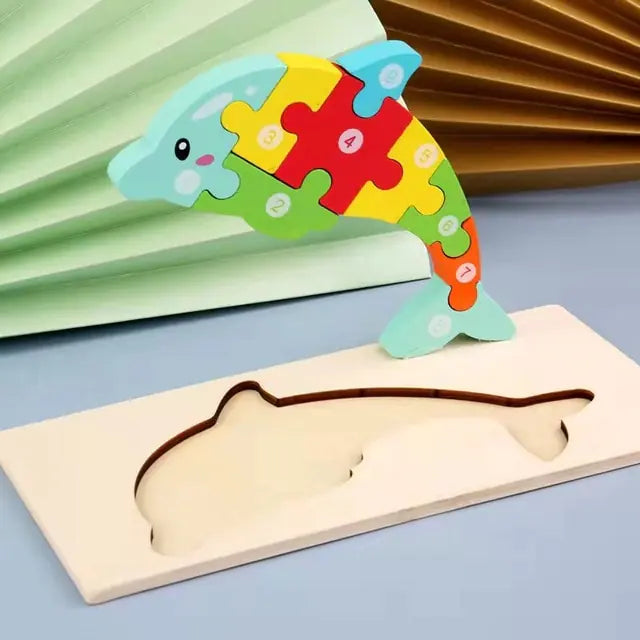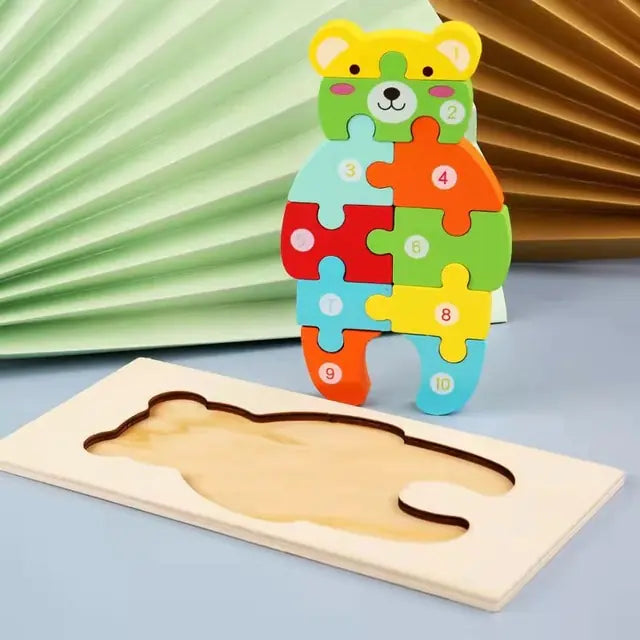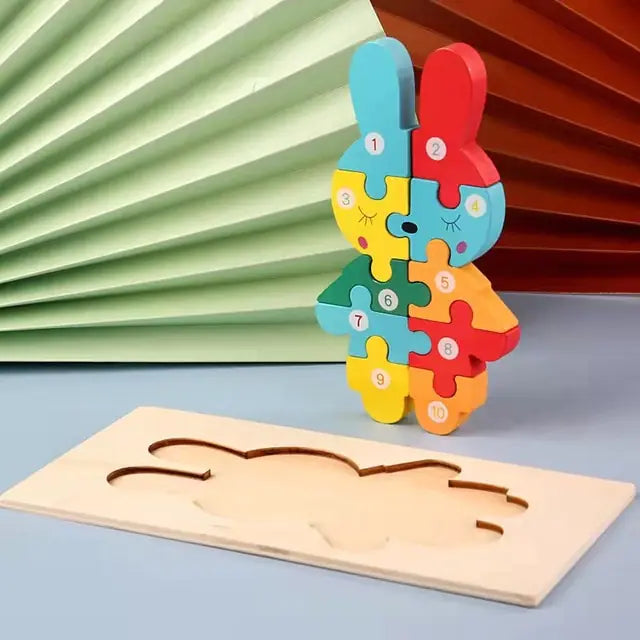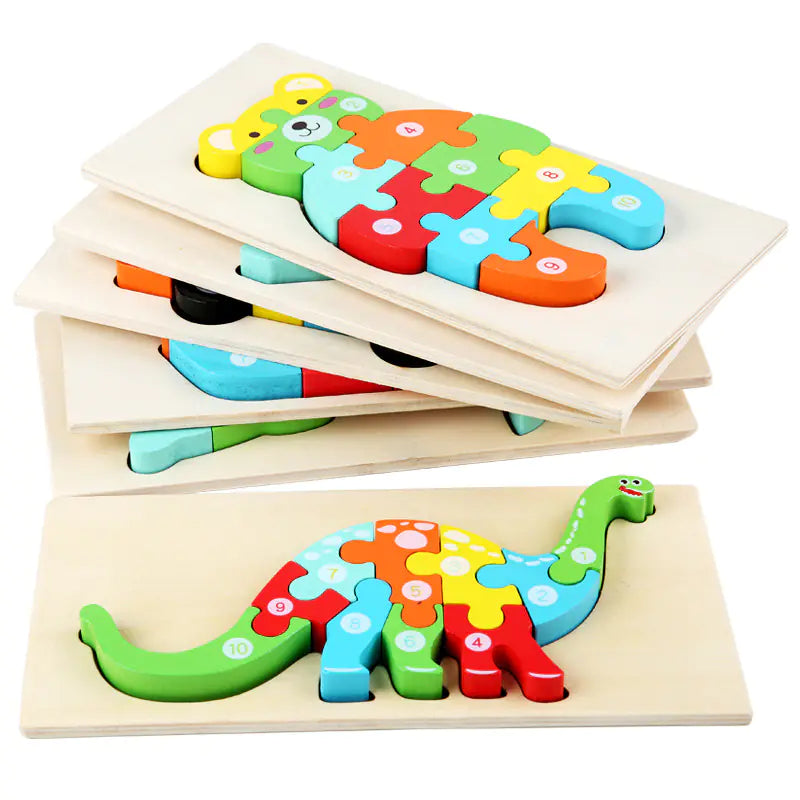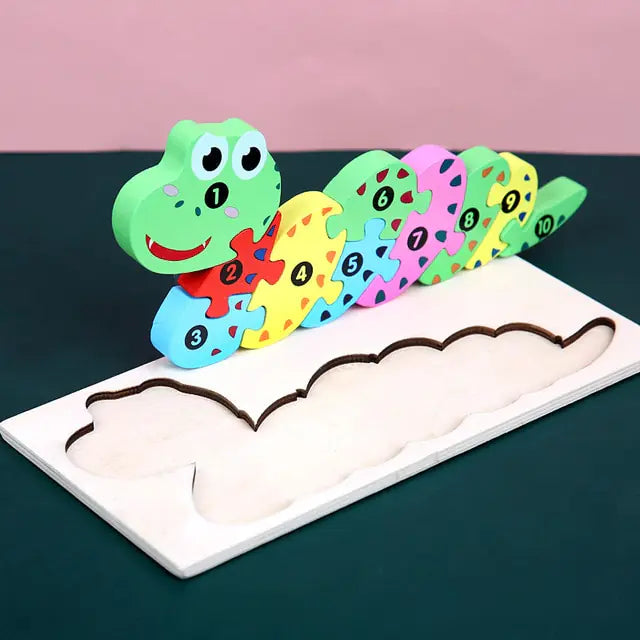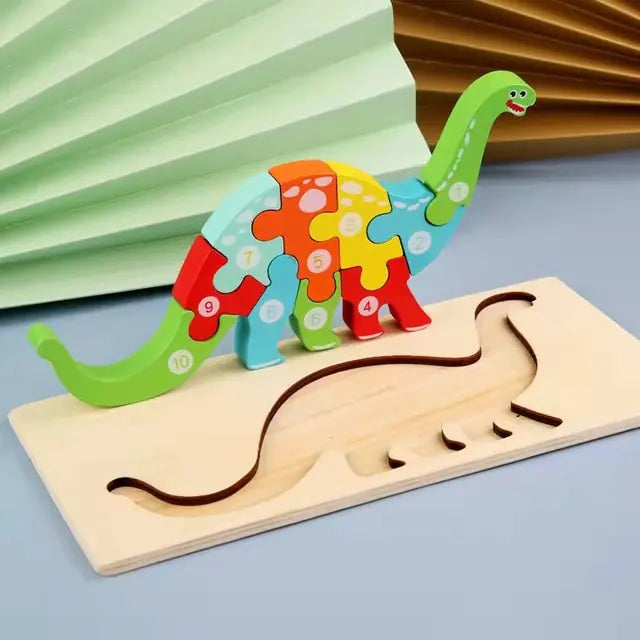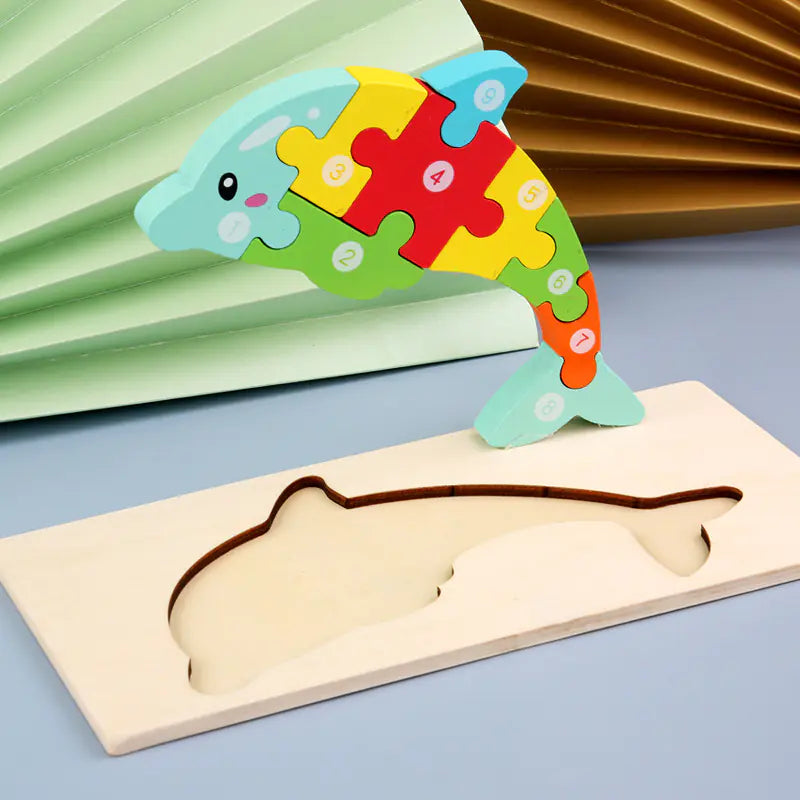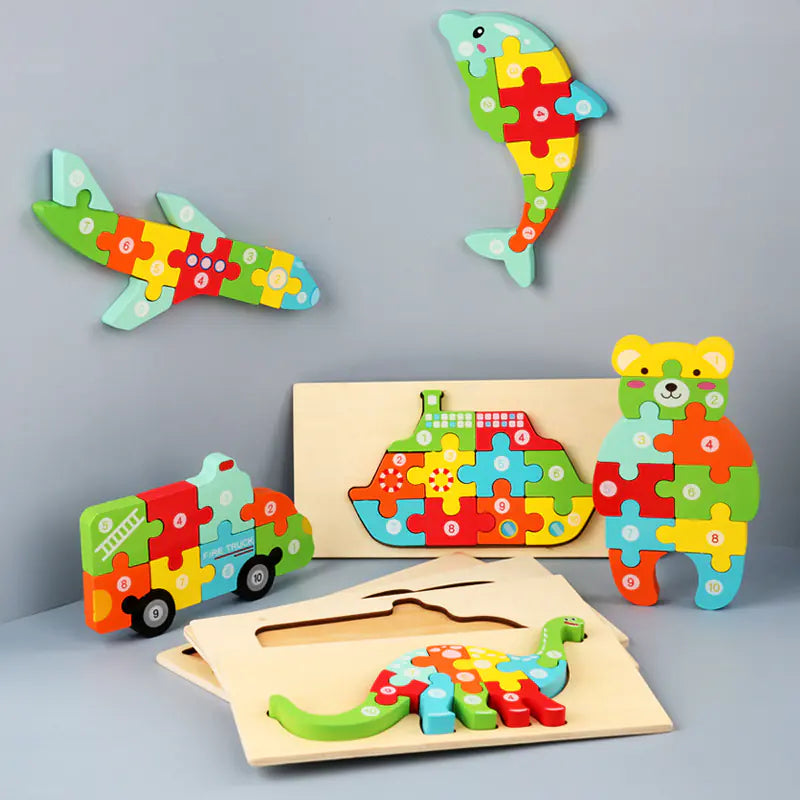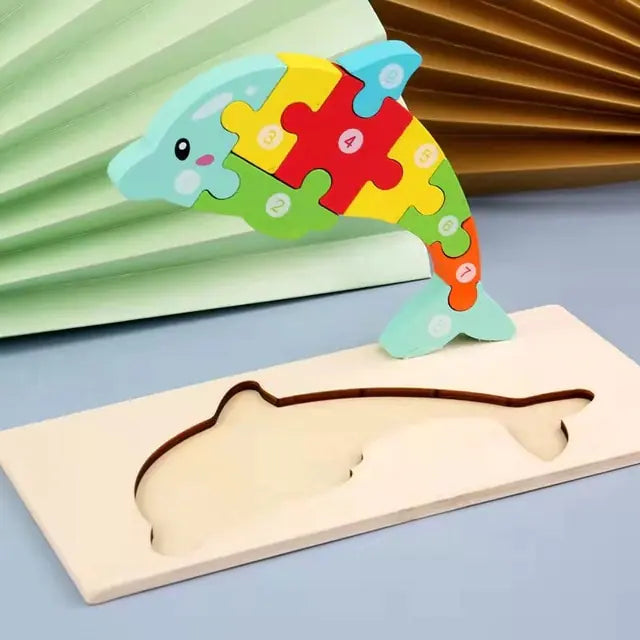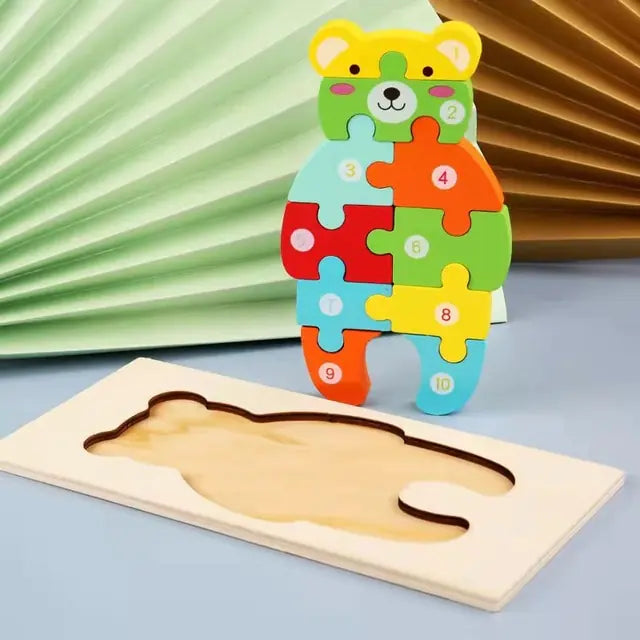Puzzles are more than mere playthings; they're a stealthy form of education camouflaged as entertainment, offering a brain-boosting bonanza for young minds. Each piece placed not only completes a picture but also constructs critical cognitive skills, transforming a simple activity into a rich learning experience. From problem-solving to critical thinking, puzzles are a hands-on tool for children, encouraging them to explore multiple solutions and learn through trial and error. This approach to learning fosters an environment where persistence and adaptability become critical players in the quest for knowledge.
The challenge of puzzles extends beyond mental acumen, nurturing patience and perseverance among young learners. Confronting and overcoming the difficulties of a jigsaw puzzle instills a sense of accomplishment and resilience, invaluable in both academic and personal arenas. Moreover, manipulating puzzle pieces enhances fine motor skills, laying a foundation for other necessary life skills, such as writing and self-care activities. It's an engaging way to develop these essential abilities, making learning feel like play.
Furthermore, puzzles have a unique ability to bring children together, promoting social skills and teamwork. As kids collaborate to solve a puzzle, they share ideas, celebrate successes, and navigate setbacks together, learning the importance of communication and cooperation. This collaborative effort makes the puzzle-solving process more enjoyable and prepares young minds for a future where teamwork and interpersonal skills are paramount. In essence, puzzles are a multifaceted educational tool, enriching children's development in a fun, engaging way.
Unlocking the Power of Puzzles in Education

The role of puzzles in cognitive development
I've always been fascinated by how puzzles challenge and engage the mind. There's a good reason for that. Studies have shown that puzzles play a significant role in cognitive development, especially in young children. They're not just toys but tools that help sharpen the brain and lay the foundation for lifelong learning.
Puzzles are more than just pieces to fit together; they're a fun way to enhance problem-solving skills. When kids work on a puzzle, they exercise their brains, improve memory, and develop attention to detail. It's like a workout for the mind, with colorful shapes and images that captivate their imagination.
By introducing puzzles early on, we're giving our kids a head start in critical thinking. It's a playful approach to learning that can lead to serious benefits down the road.
Here's a quick list of cognitive skills that puzzles help develop in young minds:
- Hand-eye coordination
- Fine motor skills
- Problem-solving
- Shape recognition
- Memory
As a parent, I'm always looking for ways to support my child's development, and puzzles are a perfect fit. They're accessible, affordable, and, most importantly, a source of endless learning opportunities.
Enhancing problem-solving skills through play
I've seen firsthand how puzzles can turn playtime into a brain-boosting workout for kids. Puzzles are more than just fun and games; they're a stealthy way to enhance problem-solving skills. Children learn to think critically and develop strategies to overcome challenges by tackling a puzzle. It's like they're flexing their mental muscles without even realizing it!
Puzzles come in all shapes and sizes, and each type offers unique benefits. For instance, jigsaw puzzles improve spatial reasoning, while crosswords expand vocabulary. Here's a quick rundown of some puzzle types and their perks:
- Jigsaw puzzles: Sharpen spatial awareness and patience.
- Crosswords: Build vocabulary and word-recognition skills.
- Sudoku: Foster logical thinking and concentration.
- Brainteasers: Encourage creative thinking and persistence.
Remember, the key is to balance challenge with enjoyment. A puzzle that's too easy won't hold their interest, and one that's too hard might discourage them. Finding that sweet spot is crucial for keeping young minds engaged and eager to solve more puzzles.
As a parent, I love watching my kids get absorbed in solving a puzzle. It's not just about the satisfaction of fitting the last piece or filling in the final square; it's about knowing they're building essential life skills through play. And the best part? They're having a blast while doing it!
Puzzles as gateways to critical thinking
I've always been a fan of using puzzles to spark that lightbulb moment in kids. It's not just about finding the right piece; it's about seeing the bigger picture. Puzzles are a fantastic way to introduce young minds to critical thinking. They require children to analyze patterns, anticipate outcomes, develop plots, and enhance problem-solving skills hands-on.
Italics aren't just for emphasis; they're a way to highlight the subtle yet powerful impact puzzles can have on cognitive growth. By encouraging kids to tackle puzzles, we're not just keeping them occupied—we're helping them build a foundation for complex reasoning and decision-making skills that will serve them well throughout their lives.
Here's a quick list of the benefits puzzles offer:
- Encourage creativity and language development
- Improve memory and concentration
- Teach patience and perseverance
- Foster goal-setting and achievement
Puzzles aren't just toys; they're tools that shape young thinkers into future problem solvers.
Puzzle It Out: Boosting Young Brains

The science behind puzzles and brain growth
I've always been fascinated by how puzzles can light up a child's mind. It turns out there's some solid science behind this. Studies have shown that engaging with puzzles can predict and enhance cognitive abilities. Puzzles are like a workout for the brain, challenging young minds to recognize patterns, improve memory, and develop problem-solving skills.
Visuospatial cognition, a fancy term for understanding the relationships between objects in space, gets a significant boost from puzzle play. This isn't just about fitting pieces together; it's about building the foundation for math and science learning later on.
Here's a quick rundown of the benefits:
- Boosts problem-solving and critical thinking skills
- Enhances hand-eye coordination
- Encourages persistence and resilience
- Improves memory and cognitive function
Remember, the key is to make it fun! A puzzle that's too easy won't challenge them, and one that's too hard might discourage them. Finding that sweet spot is crucial for keeping their little neurons firing and growing.
Case studies: Puzzles in action
I've seen firsthand how puzzles can light up a child's mind. Take a recent study with 5-6-year-olds, where problem-solving models with puzzles significantly boosted their cognitive abilities. It's not just for the little ones, either. Adults over 50 also show better visuospatial cognition when they have a puzzle-solving history. It's clear that these aren't just games; they're tools for mental growth.
Puzzles aren't just about putting pieces together; they're about piecing together the mind's potential. From spatial reasoning in STEM to abstract problem-solving in IT, puzzles serve as a hands-on approach to learning that can be tailored to any age and skill level. Here's a snapshot of the benefits:
- Cognitive Development: Puzzles stimulate critical thinking and problem-solving skills.
- Visuospatial Skills: Regular puzzle-solving can enhance spatial awareness and reasoning.
- Engagement: Puzzles provide a fun and interactive way to learn abstract concepts.
Puzzles offer a unique way to engage with learning, turning abstract concepts into tangible challenges that can be seen, touched, and solved.
From jigsaws to brain games: A spectrum of benefits
As a parent, I've seen firsthand how interactive learning toys and puzzles are more than just playthings. They're crucial to unlocking a world of cognitive development for our little ones. Puzzles are a brain workout that can enhance problem-solving skills, expand vocabulary, and improve fine motor skills. And it's not just me saying this; studies back up the benefits of puzzles for various cognitive abilities, including visuospatial cognition.
Here's a quick rundown of the perks:
- Problem-solving: Tackling a puzzle requires strategy and logic, skills transferable to real-world challenges.
- Fine motor development: Picking up and placing puzzle pieces helps develop hand-eye coordination and dexterity.
- Language skills: Describing shapes, colors, and actions while puzzling boosts vocabulary and communication.
Remember, the goal is to balance challenge with fun. Too easy, and they'll get bored; too hard, and they might get frustrated. Finding that sweet spot is key to a rewarding puzzle experience.
Whether it's a classic jigsaw or the latest brain game app, incorporating puzzles into your child's playtime is an intelligent move. It's a joy to watch them piece together a puzzle, even more so when you know it's building their brainpower for the future.
Crafting the Perfect Puzzle Experience

Choosing suitable puzzles for different age groups
When selecting puzzles for our little ones, it's all about hitting that sweet spot where challenge meets fun. Chunky wooden puzzles with bright colors and simple shapes are perfect for toddlers and preschoolers. They're safe and durable and help with hand-eye coordination and basic problem-solving.
As kids grow, so should the complexity of their puzzles. Elementary-aged children thrive with more intricate jigsaw puzzles that require patience and strategy. These puzzles can be a playful bridge to more advanced cognitive skills, like spatial awareness and logical reasoning.
For older kids and teens, brainteasers and 3D puzzles provide a fantastic brain workout. They'll be honing their critical thinking and perseverance while having a blast—it's a win-win!
Remember, the goal is to challenge their minds, not frustrate them. So, keep an eye on their cues and be ready to step in with a hint or two if needed.
Here's a quick age-appropriate puzzle guide to get you started:
- Ages 1-2: Peg and knob puzzles
- Ages 3-4: Frame puzzles with larger pieces
- Ages 5-7: Jigsaw puzzles with 50-100 pieces
- Ages 8+: More complex jigsaw puzzles, logic puzzles, and 3D challenges
Balancing challenge and fun
When introducing puzzles to my kids, I always aim for that sweet spot where a challenge sparks their curiosity without tipping into frustration. It's all about finding the right level of difficulty that keeps them engaged but doesn't overwhelm them. For instance, Lego Duplo sets are fantastic for younger children, offering just enough complexity to foster cognitive development and creativity while enhancing their problem-solving skills through hands-on learning.
- For toddlers, simple shape sorters or peg puzzles are perfect.
- Preschoolers might graduate to more complex jigsaws or interlocking blocks.
- Older kids can tackle brain teasers or logic puzzles that require more strategic thinking.
Remember, the goal is to make learning through puzzles an enjoyable journey, not a race to the finish line. It's crucial to celebrate the process, not just the solution.
Finding the right puzzle can be a bit of a puzzle in itself! But once you do, you'll see the joy in your child's eyes as they piece together more than just the puzzle – they're piecing together knowledge, skills, and confidence.
Tips for integrating puzzles into daily learning
I've found that weaving puzzles into daily learning doesn't have to be daunting. It's all about making it a fun and regular part of your child's routine. Start with a puzzle warm-up to kick off the day; it's like a brain gym where young minds stretch and flex their cognitive muscles. A rebus puzzle or a simple jigsaw can set a positive tone for the day's lessons.
Here's a quick list to make puzzle time effective and engaging:
- Select puzzles that align with your child's interests to keep them captivated.
- Use puzzles as a reward for completing tasks or behaving well.
- Encourage your child to reflect on their problem-solving process; it's a great way to develop metacognitive skills.
- Rotate puzzles regularly to maintain a fresh challenge.
Remember, the goal is to integrate puzzles seamlessly into learning, not to add to your child's workload. Keep it light, keep it fun, and watch as they develop a love for learning through play.
By incorporating just a few minutes of puzzle play into your child's daily learning, you provide them with opportunities to work on everything from spatial reasoning to abstract thinking. This simple strategy has many benefits.
Puzzles in the Digital Age

Interactive puzzle apps and their educational value
I've seen firsthand how interactive puzzle apps can turn screen time into a brain-boosting activity. These apps are more than just digital distractions; they're a playground for young minds to explore and grow. Kids can develop skills like pattern recognition, logical reasoning, and basic coding principles with the right app.
Educational games, like puzzles, are not just about solving a problem; they're about learning how to think. A report by Statista highlighted the estimated market value of kids' learning apps at a whopping 4.19 billion USD in 2022, which tells us that these tools are becoming an integral part of learning.
- Puzzles for cognitive development
- Enhancing problem-solving skills
- Introducing programming concepts
By integrating interactive puzzles into their playtime, kids can enjoy a seamless blend of fun and learning, setting the stage for a lifetime of curiosity and knowledge-seeking.
Combining traditional puzzles with technology
I've seen firsthand how blending the tactile joy of traditional puzzles with the interactive elements of technology can enrich kids' experiences. By integrating digital features, puzzles become more than just a game; they become a dynamic learning tool. For instance, augmented reality puzzles allow children to see their creations come to life, adding excitement and engagement.
Interactive puzzle apps also offer the ability to track progress, providing instant feedback that helps kids understand where they might need to improve. Here's a quick list of benefits that come with this tech-savvy approach:
- Enhanced engagement through interactive elements
- Immediate feedback for skill improvement
- Accessibility to a more comprehensive range of puzzles
- The convenience of having multiple puzzles in one digital space
Embracing technology doesn't mean we're moving away from the classic puzzle-solving experience. It's about enhancing it, making it more relevant and exciting for today's young minds.
Ensuring screen time is learning time
As a parent, I'm always on the lookout for ways to ensure the time my kids spend on screens is entertaining and educational. Interactive puzzle apps are a fantastic way to achieve this balance. They're designed to engage kids with colorful graphics and fun challenges while building their cognitive skills.
- Here's why I love them for my kids:
- They encourage critical thinking and problem-solving.
- They're accessible anytime, which is perfect for busy schedules.
- They offer a variety of puzzles, keeping the experience fresh and exciting.
By carefully choosing apps that are both fun and educational, we can transform screen time into a valuable learning opportunity. It's all about finding those gems that manage to capture our kids' attention while subtly boosting their brain power.
Let's not forget the convenience factor. With a few taps, we can download a new puzzle game that fits our child's age and skill level. It's a win-win situation: They get to enjoy their screen time, and we get to feel good about their learning.
Math Mysteries: Learning Through Puzzles

Math puzzles as a tool for teaching concepts
I've always found that math puzzles are a fantastic way to make learning math concepts more engaging and effective. By presenting problems as puzzles, kids get to apply their knowledge in a fun and interactive way, which can help those tricky concepts stick. For instance, a simple Sudoku puzzle reinforces logic and pattern recognition, while a set of math riddles can challenge a child's understanding of mathematical operations.
Here's a quick list of math puzzle types that can boost learning:
- Sudoku: Develops logic and pattern recognition.
- Crossword Puzzles: Enhances vocabulary and concept recall.
- Math Riddles: Encourages critical thinking and application of math skills.
Remember, the key is to choose puzzles that are age-appropriate and align with the math concepts your child is currently learning. This ensures that the puzzle-solving experience is both challenging and rewarding, without being too frustrating.
And let's not forget the satisfaction kids feel when they solve a puzzle independently. It's a confidence booster that makes them eager to tackle more problems – and that's a win in my book!
Designing math puzzles for maximum engagement
When I think about making math fun for kids, I always circle back to the idea of a math treasure hunt. Imagine the excitement as they solve problems to find the next clue, leading them to a hidden prize. It's a fantastic way to get them to apply their math skills in a real-world scenario, and it's just one of the many ways to design math puzzles that keep young minds eager and engaged.
Engaging visuals and interactive activities are vital to capturing children's attention. I like to incorporate colorful illustrations and puzzles into math worksheets, turning what could be a mundane task into a vibrant and stimulating challenge. It's not just about the numbers; it's about making the experience memorable.
Math puzzles and riddles are more than just exercises; they're adventures in numbers that spark curiosity and reward problem-solving with the satisfaction of 'aha!' moments.
Lastly, remember to tailor the difficulty to the age group. A well-crafted puzzle should be challenging enough to be exciting but not so complex that it becomes frustrating. Here's a quick list to keep in mind when designing math puzzles:
- Use age-appropriate math concepts
- Include clear instructions and goals
- Provide hints or ways to check work
- Celebrate the process, not just the solution
By following these guidelines, you'll create an environment where math is learned and loved.
Math riddles and their role in critical thinking
I've always been fascinated by how math riddles can light up a child's eyes with curiosity and determination. These clever brain teasers are more than just fun—they're a workout for the brain that strengthens critical thinking skills. Solving a math riddle requires a child to think outside the box, to twist and turn numbers and concepts until they click into place. This kind of mental gymnastics can help young minds grow in agility and depth of thought.
Italics aren't just for emphasis; they're a way to highlight the importance of critical thinking in everyday life. Math riddles teach kids to approach problems from different angles, question assumptions, and enjoy the thrill of discovery. Here's a quick list of benefits that math riddles can offer:
- Encourages creative thinking and flexibility
- Develops persistence in tackling challenging problems
- Sharpens logical reasoning and pattern recognition
- It provides a sense of accomplishment and boosts confidence
Remember, the goal isn't just to find the right answer—it's to build a resilient and inquisitive mindset that will serve children well in all areas of life. By incorporating math riddles into playtime, we're not just entertaining our kids; we're equipping them with the tools to navigate a complex world.
The Social Side of Puzzle Solving

Collaborative puzzles and teamwork
I've always believed that play is not just about having fun—it's a critical part of learning, especially for our little ones. Take jigsaw puzzles, for instance. They're not only a blast to piece together, but they also teach kids the importance of working together. Collaborative puzzles can transform individual play into a team effort, fostering communication and cooperation among children.
When kids huddle around a puzzle, they're doing more than just fitting pieces together; they're learning to share ideas, celebrate each other's successes, and navigate the occasional disagreement. It's a safe and enjoyable way for them to experience the dynamics of teamwork. Here's a quick list of the benefits:
- Encourages the sharing of strategies and problem-solving techniques
- Builds resilience as kids work through challenges together
- It helps children recognize patterns and reinforces critical thinking
Remember, the goal isn't just to complete the puzzle—it's about the journey there, the skills they pick up, and the bonds they form along the way.
Puzzle competitions: Fostering a spirit of healthy competition
I've seen firsthand how puzzle competitions can light up a child's world. They're not just about winning but about learning to tackle challenges with grace and determination. Puzzle games enhance children's problem-solving skills and spatial awareness, making them a fantastic addition to any educational toolkit. Here's a quick list of tips to make the most out of these competitions:
- Start with simple puzzles to build confidence.
- Use durable materials to withstand the excitement.
- Ensure the challenge is tough enough to be engaging but not so rigid it leads to frustration.
Remember, the goal is to promote a love for learning and a can-do attitude.
And let's not forget the social aspect. When kids work together to solve puzzles, they're boosting their talent and creativity and learning valuable lessons in teamwork and communication. So, consider setting up a puzzle competition next time you think of a fun and educational activity. It's a win-win for everyone involved.
Sharing puzzle fun with family and community
I've always believed that the joy of solving puzzles shouldn't be confined to the classroom. It's beautiful to see families come together, with kids and parents huddled over a jigsaw or a brain teaser, working as a team. Puzzles are a fantastic way to bond, and they sneak in some cognitive severe benefits while everyone's having fun.
- Here's how you can make puzzle time a staple at home:
- Dedicate a puzzle corner with a variety of options.
- Schedule regular family puzzle nights.
- Encourage kids to create their puzzles for extra creativity.
Remember, the key is to balance challenge with enjoyment. You want puzzles that make your kids think, but not so tough that they feel overwhelmed.
And it's not just about staying at home. I love seeing community events centered around puzzles. Whether a local library hosts a puzzle swap or a school organizes a puzzle-solving contest, these activities foster a sense of community and shared achievement. Let's not forget the educational games found in stores, which often include puzzles designed to be fun and instructive. So, next time you're out shopping for your little ones, consider picking up a puzzle that the whole family can enjoy.
Puzzles as a Gateway to Global Learning

Exploring world cultures through puzzles
I've always been fascinated by the rich tapestry of world cultures, and I've found a fun and educational way to share this passion with my kids—through puzzles! Puzzles offer a unique window into different cultures, allowing young minds to unite the world one country at a time. Imagine the excitement as your child completes a puzzle of the Eiffel Tower or the Great Wall of China. It's like a mini adventure in your living room!
Italics aren't just for emphasis; they're for travel, too. By solving puzzles representing various countries and their iconic landmarks, children embark on a journey that spans continents without ever leaving home. Here's a quick list of the benefits:
- Encourages geographic awareness
- Introduces international landmarks
- Sparks conversations about history and culture
Puzzles are more than just a pastime; they're a playful and interactive way to explore the world.
And let's not forget their sense of accomplishment when they fit that last piece! It's a small step for a puzzle but a giant leap for their understanding of the world.
Geography puzzles that map out learning
I've always been fascinated by how geography puzzles can turn a simple map into a world of discovery for kids. These puzzles are not just about placing pieces together; they're about embarking on a learning journey. By piecing together continents, countries, and oceans, children grasp the concept of spatial relationships and begin to understand the diversity of our planet.
Geography puzzles are a fantastic tool for visual and kinesthetic learners, allowing them to touch and see the world in a way that sticks. Here's a quick list of the benefits:
- Enhances geographical knowledge
- Improves memory and recognition of world regions
- Encourages curiosity about different cultures and environments
Puzzles are a subtle yet powerful educational tool, seamlessly blending learning with play.
And let's not forget that these puzzles often include fun facts, making the learning experience even richer. As parents, we can foster a love for our world and its complexities through these interactive experiences. So, next time you're looking for an educational toy, consider a geography puzzle that can chart a course for learning and adventure.
Language and puzzles: A match made in educational heaven
I've seen firsthand how puzzles can turn language learning into a delightful adventure for kids. Rebus puzzles, for instance, are a fantastic way to help young minds grasp the concept of compound words. By combining images and letters, these puzzles discover new exciting and intuitive words.
- Rebus puzzles encourage innovative thinking.
- They're a playful way to learn about language.
- They make words come alive through pictures.
Puzzles like these not only support language development but also enhance critical thinking and creativity. And the best part? They're incredibly fun, making them a perfect fit for both classroom and home settings. So, when you're looking for that next educational toy, consider the humble puzzle – it might just be the key to unlocking your child's love for language.
Creative Thinking with Rebus Puzzles

What are rebus puzzles, and how do they work?
I've always been fascinated by the way simple images and words can come together to create a whole new meaning. That's the beauty of rebus puzzles. They're a visual word puzzle that uses pictures, symbols, and letters to represent a word or phrase. For example, imagine an image of an eye followed by a can of peas. Put them together, and you've got 'I can peas'—or rather, 'I can peace.' It's a playful twist on language that entertains and sharpens the mind.
Rebus puzzles encourage creativity and problem-solving, just like the hands-on learning in Montessori classrooms. They're perfect for young learners because they combine fun with educational value. Here's a quick list of why I love incorporating them into learning time:
- They boost vocabulary and spelling skills.
- They enhance lateral thinking and concentration.
- They're a great way to introduce new concepts memorably.
By challenging kids to think outside the box, rebus puzzles provide a unique opportunity to engage with language and imagery in a way that's both fun and educational.
Incorporating rebus puzzles into classroom activities
I've found that rebus puzzles are a fantastic way to spice up the classroom routine. These clever little brain teasers are more than just fun; they're a stealthy way to enhance vocabulary and excite those young minds about words and phrases. Introducing a new rebus puzzle daily gives kids a daily dose of problem-solving that feels more like play than work.
Here's a quick tip: Start with simple puzzles and gradually increase the complexity as the students become more adept at solving them. This keeps the challenge level just right and prevents frustration. And don't forget to celebrate the victories – a little praise goes a long way in boosting confidence!
- I like to turn it into a story challenge to make it even more engaging. After solving the puzzle, students can write a short story incorporating the answer. It's a great way to reinforce the learning and let their creativity shine.
Encouraging students to document their puzzle solutions and stories in a notebook not only reinforces the learning but also creates a wonderful portfolio of their progress.
Rebus puzzles as a warm-up for the day's lessons
I've found that starting the day with a rebus puzzle is like a shot of espresso for the brain. These visual word challenges prime young minds for learning, spark creativity and set a curious tone. The playful twist gets kids thinking outside the box before diving into the day's lessons.
Why rebus puzzles, you ask? Here's a quick rundown:
- They enhance visual recognition.
- They promote critical thinking.
- They're a fun way to introduce new vocabulary.
- They set a relaxed yet engaging classroom atmosphere.
By incorporating rebus puzzles into morning routines, we're not just warming up the brain—we're also reinforcing language skills and preparing students for a day filled with discovery and learning.
And let's not forget the sheer joy these puzzles bring. When kids crack the code, their faces light up with that 'aha!' moment, and that's when you know they're ready to tackle whatever comes next. So, let's get those puzzles out and watch as our kids' minds stretch and grow with each new challenge.
Assessing Progress with Puzzles

Using puzzles to gauge student understanding
I've found that puzzles are a fantastic way to peek into the minds of young learners. When kids work on puzzles, they're not just having fun but revealing their thought processes and problem-solving strategies. By observing how they tackle a puzzle, we can gain insights into their cognitive abilities and learning styles. For instance, spatial reasoning—a skill sharpened by puzzle-solving—is imperative for tackling complex problems in STEM subjects.
Puzzles allow us to map out a child's 'Think-Aloud' steps, providing a clear picture of their cognitive development.
Here's a simple way to assess progress using puzzles:
- Note the initial approach a child takes to solve a puzzle.
- Observe their strategies and how they adjust them when faced with challenges.
- Record the time to complete the puzzle and the level of assistance needed.
- Discuss with the child what they thought about while solving the puzzle.
This qualitative data can be as valuable as test scores in understanding where a child excels or needs more support. It's a hands-on, engaging method that feels more like play than assessment, but the insights are accurate and actionable.
Puzzles as a form of formative assessment
I've discovered that puzzles are not just for fun; they're a fantastic way to gauge how well our kids grasp new concepts. By observing them tackle a puzzle, we can clearly understand their problem-solving skills and cognitive growth. It's like a sneak peek into their little minds at work!
For instance, when sorting pieces and figuring out where they fit, they showcase their understanding of shapes, colors, and spatial relationships. These little victories in puzzle completion tell us they're on the right track. And the best part? They're learning without realizing it—playtime becomes a stealthy assessment tool.
Puzzles allow us to see the 'Think-Aloud' steps of our children's thought processes, which is invaluable for their development.
Here's a quick list of what to look for when your child is puzzle-solving:
- How they approach a new puzzle
- Their strategy for finding the correct piece
- The way they handle trial and error
- Their persistence and focus throughout the activity
This informal assessment is a gentle way to steer them towards improvement without pressure. Plus, it's a great excuse to spend quality time together. So next time you're puzzling with your kiddos, take note of these little clues—they're golden insights into their learning journey!
Tracking cognitive development through puzzle completion
I've seen firsthand how puzzles can be a barometer for our kids' cognitive growth. Solving puzzles is not just play; it's a predictor of mental abilities. Studies have shown that children who engage with puzzles from a young age develop problem-solving skills that serve them well into adulthood. It's fascinating to watch as the puzzles they tackle become more complex, mirroring the development of their brains.
Puzzles are more than just a way to pass the time; they're a fun and engaging method to assess and encourage cognitive development in children.
Here's a simple way to track progress:
- Start with simple puzzles and observe how quickly your child solves them.
- Gradually introduce more challenging puzzles and note the improvement in their problem-solving tactics.
- Celebrate the milestones, like moving from jigsaw puzzles to brain teasers, as each represents a step forward in cognitive development.
Remember, the goal is to balance challenge with enjoyment, ensuring that each puzzle experience contributes positively to your child's growth.
Puzzles Beyond the Classroom

Extending the puzzle-solving experience to home
I've always believed that the joy of puzzles shouldn't be confined to the classroom. That's why I'm a huge advocate for bringing them into our homes and transforming living spaces into vibrant hubs of learning and creativity. Construction sets, puzzles, and art supplies are not just toys; they're educational tools that enhance children's problem-solving, motor skills, and cognitive development, offering a gateway to lifelong skills and knowledge.
Here's a simple list to get you started on creating a puzzle-friendly environment at home:
- Dedicate a 'puzzle corner' where your kids can leave their puzzles out without having to pack them away each time.
- Rotate puzzles regularly to keep things fresh and challenging.
- Encourage your kids to design their puzzles, fostering creativity and critical thinking.
- Share the fun with family game nights, where puzzles can be a central activity.
Remember, the key is to balance challenge and enjoyment, ensuring that your child feels a sense of accomplishment with each puzzle they solve. This not only boosts their confidence but also reinforces the joy of learning through play.
Puzzles in after-school programs and clubs
After a full day of structured learning, kids often need a change of pace. That's where after-school programs and clubs offer a perfect setting for puzzles to shine as educational tools. Puzzles provide a unique blend of fun and learning, engaging young minds in a more relaxed environment.
- Jigsaw Puzzles: These classics are great for teamwork and problem-solving.
- Vocabulary Scrambles: A race to unscramble words reinforces language skills.
- Math Puzzles: Crosswords and Sudoku with a math twist challenge young brains.
Puzzles in these settings can transform idle time into productive play, fostering a love for learning even after the school bell rings.
Moreover, the social aspect of puzzle-solving in clubs encourages peer collaboration and communication. Watching kids huddle over a puzzle, discussing strategies, and sharing the thrill of solving it is a joy. And let's not forget their sense of accomplishment when they place that final piece. These moments remind me why I advocate for puzzles as a critical component of any after-school program.
Creating a puzzle-loving community
Fostering a love for puzzles within a community starts at home and spreads like wildfire. I've seen it firsthand: when kids get excited about a new jigsaw or brain teaser, they can't wait to share it with their friends. Building a puzzle-loving community is about more than just the puzzles themselves; it's about creating a culture of curiosity and collaboration.
- Customers love Gravity Maze for creativity in kids.
- Jigsaw puzzles enhance problem-solving, fine motor skills, and memory.
- Chuckle & Roar offers diverse puzzles for all ages.
- Melissa & Doug craft kits unleash artistic talents.
By introducing a variety of puzzles, we cater to different interests and skill levels, ensuring that everyone can join in the fun. It's essential to have a mix of puzzles that challenge and engage, from Gravity Mazes that spark creativity to classic jigsaw puzzles that bolster problem-solving skills. Chuckle & Roar and Melissa & Doug are just a couple of brands offering a wide range of options for all ages, making it easy to find the perfect fit for any child.
Encouraging kids to share their puzzle conquests with friends and family not only strengthens social bonds but also reinforces the skills they've gained. It's a win-win situation where children learn while they play, and the joy of solving puzzles becomes a shared experience that brings people together.
Embark on an adventure beyond the ordinary with our captivating 3D puzzles at Wonder Kids Toy Store! These multifunctional educational toys are not just for the classroom; they're perfect for home play, offering a world of creativity, problem-solving, and fun. Dive into our collection and watch your child's imagination take flight. Don't wait; visit our website now and discover the perfect puzzle to challenge and delight your little ones!
Wrapping It Up: Puzzles as Brain Boosters!
Alright, folks! We've navigated the playful yet profound world of puzzles and discovered how they're not just toys but powerful learning allies for our young geniuses. From rebus puzzles that wake up sleepy brains to math riddles that make numbers fun, puzzles are the secret sauce to spicing up learning and sharpening those problem-solving skills. So, let's scatter some jigsaws on the rug, crack open a Sudoku book, and watch those little minds tackle challenges with glee. Remember, every piece they fit together is a step towards building a brighter, more brilliant future. Keep puzzling and keep learning!
How do puzzles support cognitive development in children?
Puzzles contribute to cognitive development by enhancing problem-solving skills, improving hand-eye coordination, and fostering critical thinking. They challenge young minds to recognize patterns, understand spatial arrangements, and develop memory and concentration.
What types of puzzles are best for young learners?
The best puzzles for young learners are age-appropriate and balance challenge and attainability. Jigsaw puzzles, shape sorters, and simple crosswords are great for younger children, while older kids can benefit from more complex brainteasers, logic puzzles, and math riddles.
Can puzzles improve problem-solving skills in children?
Yes, puzzles can significantly improve children's problem-solving skills. They require learners to hypothesize, test solutions, and adapt strategies, which are critical components of practical problem-solving.
How can puzzles be integrated into daily learning activities?
Puzzles can be integrated into daily learning as warm-up activities, incorporating them into subject-specific lessons, or setting aside dedicated puzzle-solving time. They can also be used to reinforce concepts taught in class.
Are digital puzzles as effective as traditional puzzles for learning?
Digital puzzles can be just as effective as traditional puzzles, offering interactive and engaging learning methods. They often come with additional features like hints or immediate feedback, aiding learning.
How can puzzles be used to teach math concepts?
Math puzzles can make abstract concepts tangible by using visual-spatial reasoning. They can teach arithmetic, geometry, and logic by requiring students to apply mathematical principles to find solutions.
What are the social benefits of puzzle-solving for children?
Puzzle-solving can enhance social skills by encouraging teamwork, communication, and the sharing of strategies. Collaborative puzzles and puzzle competitions can foster community and healthy competition among children.
How can the effectiveness of puzzles as learning tools be assessed?
The effectiveness of puzzles as learning tools can be assessed by observing improvements in problem-solving abilities, tracking the increasing complexity of puzzles solved over time, and evaluating students' engagement and enthusiasm for puzzle-based activities.
